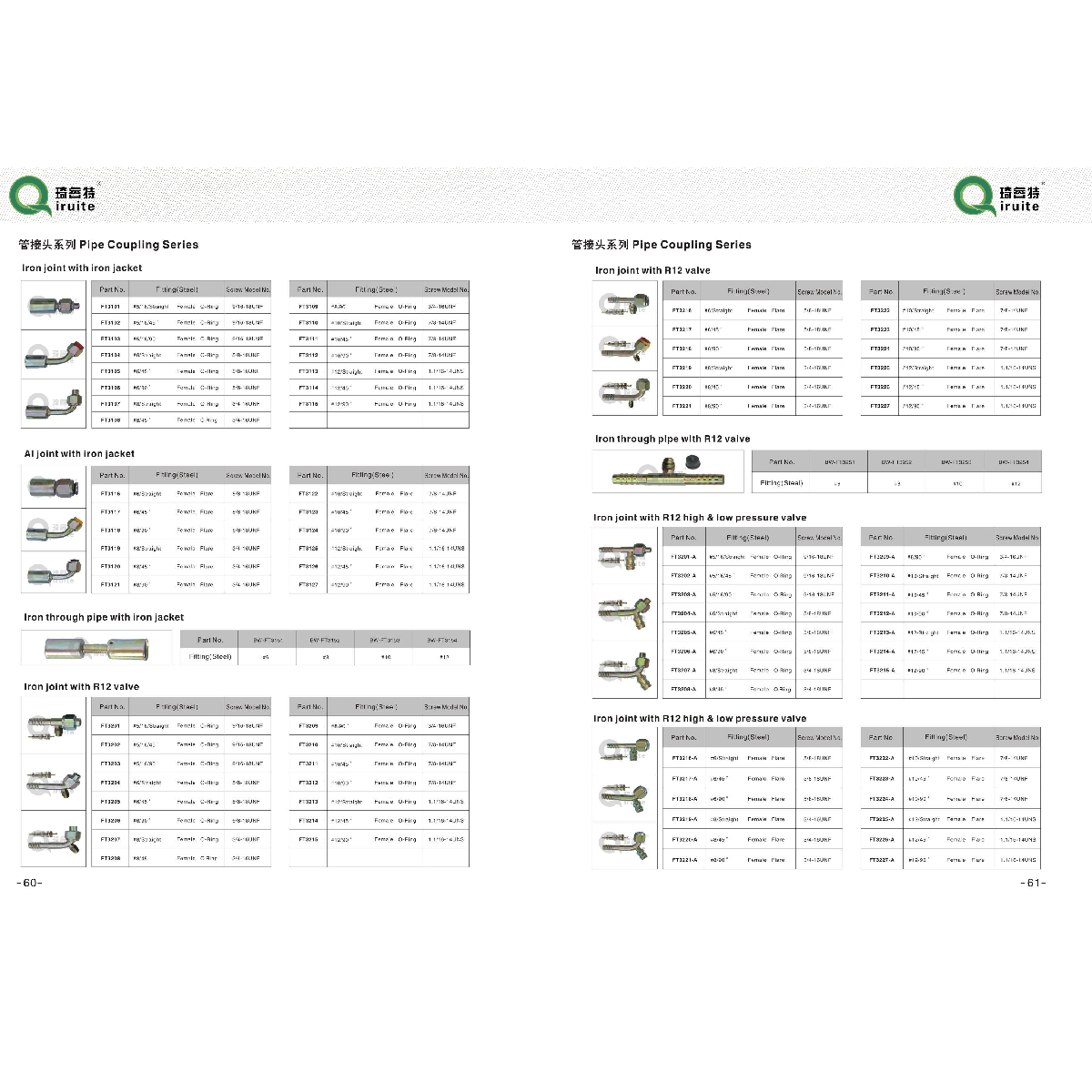Understanding Brake Hose Fittings for Efficient Automotive Performance and Safety
Understanding Brake Hose Fittings A Critical Component for Vehicle Safety
When it comes to vehicle safety, few components are as critical as the braking system. Among the many parts that contribute to effective braking performance, brake hose fittings play a crucial role. These fittings serve as the connection points between the brake hoses and various brake system components, ensuring that hydraulic fluid can flow effectively to create the necessary force for braking. In this article, we will explore what brake hose fittings are, their types, their importance, and how to choose the right fittings for your vehicle.
What are Brake Hose Fittings?
Brake hose fittings are specialized connectors that attach brake hoses to other parts of the braking system, such as the brake calipers, master cylinders, and hoses leading to the brake drums. These fittings are designed to withstand high pressure and must provide a reliable seal to prevent leaks, which can compromise the braking system's effectiveness.
Typically, brake hose fittings are made from durable materials such as steel or aluminum, offering both strength and resistance to corrosion. The design of these fittings can vary based on the vehicle type and the specific application within the braking system.
Types of Brake Hose Fittings
Brake hose fittings can be classified into various types, each designed for specific vehicle requirements
1. Metric Fittings Commonly used in European vehicles, these fittings adhere to specific metric dimensions which may differ from standard sizes found in American vehicles.
2. Standard Fittings Often found in North American vehicles, these fittings use imperial measurements. They are typically easier to find in auto parts stores if replacements are needed.
3. Flared Fittings These fittings have a tapered end that helps create a tight seal when connected to the hose. Flared fittings are prevalent in applications where high-pressure resistance is needed.
4. Compression Fittings These rely on a compression seal to hold the hose in place. They are often easier to install and are used in various applications beyond just brakes.
5. Crimped Fittings A permanent type of fitting, these require special tools for installation. Crimped fittings are highly secure and are often used where safety is paramount.
brake hose fitting

Importance of Brake Hose Fittings
The significance of brake hose fittings cannot be overstated. They are responsible for maintaining the integrity of the braking system under various conditions. A failure in the fitting can lead to brake fluid leaks, which will compromise the hydraulic system's performance and can even lead to total brake failure.
In addition, since the braking system operates under high pressure, the fittings must be robust enough to handle the stresses involved. Regular inspection of the fittings is crucial for diagnosing potential issues before they escalate into more significant problems.
Choosing the Right Brake Hose Fittings
When selecting brake hose fittings, several factors should be considered to ensure proper fit and function
1. Compatibility Ensure that the fittings you choose are compatible with your vehicle's braking system. Refer to your vehicle’s manufacturer specifications to find the correct fitting sizes and types.
2. Material Opt for high-quality materials that resist corrosion and wear. This factor can significantly affect the longevity of your braking system.
3. Service Conditions Consider the operating conditions of your vehicle. If you drive in extreme climates or conditions (such as high heat or exposure to salt), you may need fittings that offer greater resistance to these factors.
4. Professional Installation If you are not familiar with brake system components, it's advisable to consult a professional mechanic. Proper installation is key to ensuring that the fittings work effectively and safely.
Conclusion
In summary, brake hose fittings are a vital component of any vehicle's braking system. Their ability to create a reliable connection allows for the safe operation of brakes, ensuring smooth and effective stopping. By understanding the different types of fittings available and their importance, vehicle owners can make informed decisions about maintenance and replacements. Remember, a small oversight in the braking system can have serious consequences, so take the time to regularly check the integrity of your brake hose fittings – it could save your life.
-
Ultimate Spiral Protection for Hoses & CablesNewsJun.26,2025
-
The Ultimate Quick-Connect Solutions for Every NeedNewsJun.26,2025
-
SAE J1401 Brake Hose: Reliable Choice for Safe BrakingNewsJun.26,2025
-
Reliable J2064 A/C Hoses for Real-World Cooling NeedsNewsJun.26,2025
-
Heavy-Duty Sewer Jetting Hoses Built to LastNewsJun.26,2025
-
Fix Power Steering Tube Leaks Fast – Durable & Affordable SolutionNewsJun.26,2025

